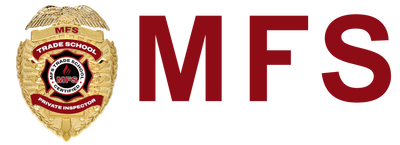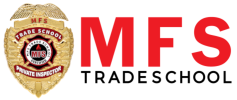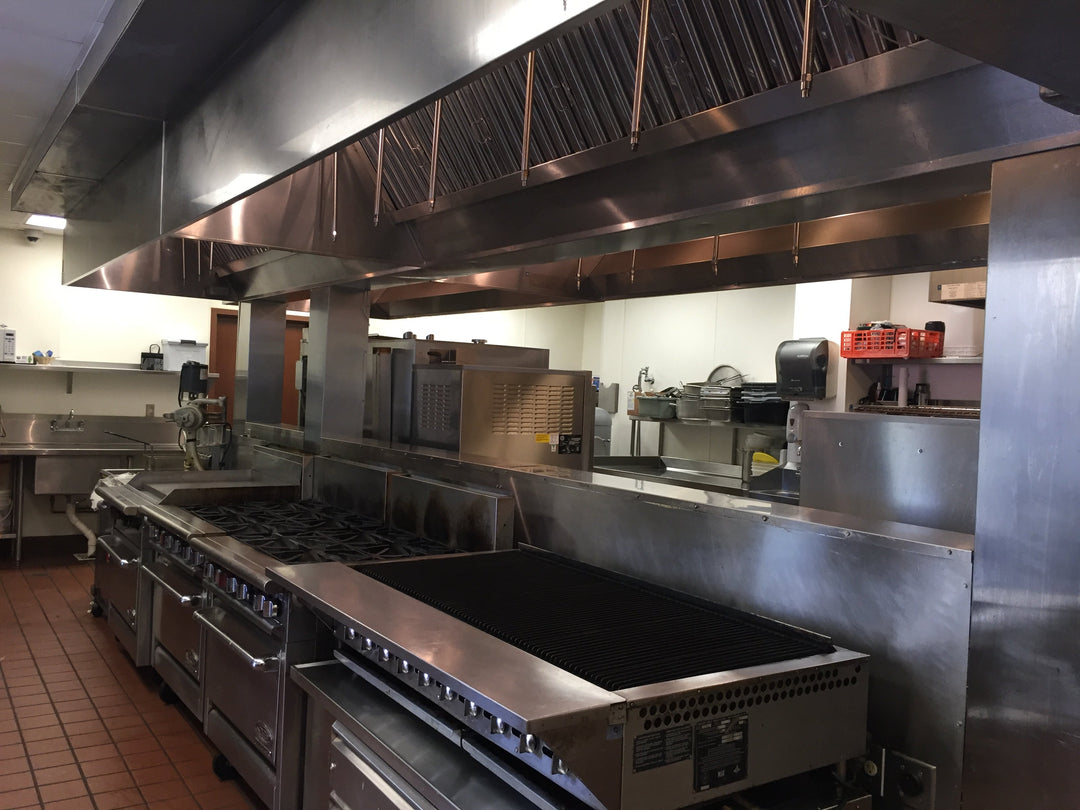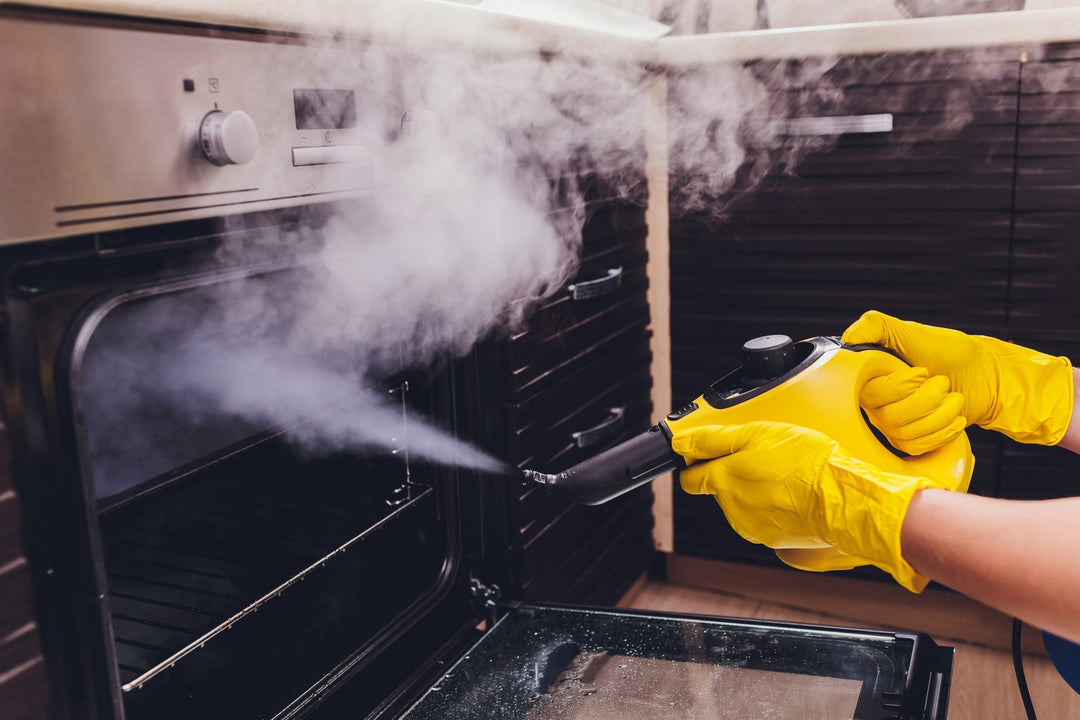Preparing Your Kitchen for Professional Hood Cleaning
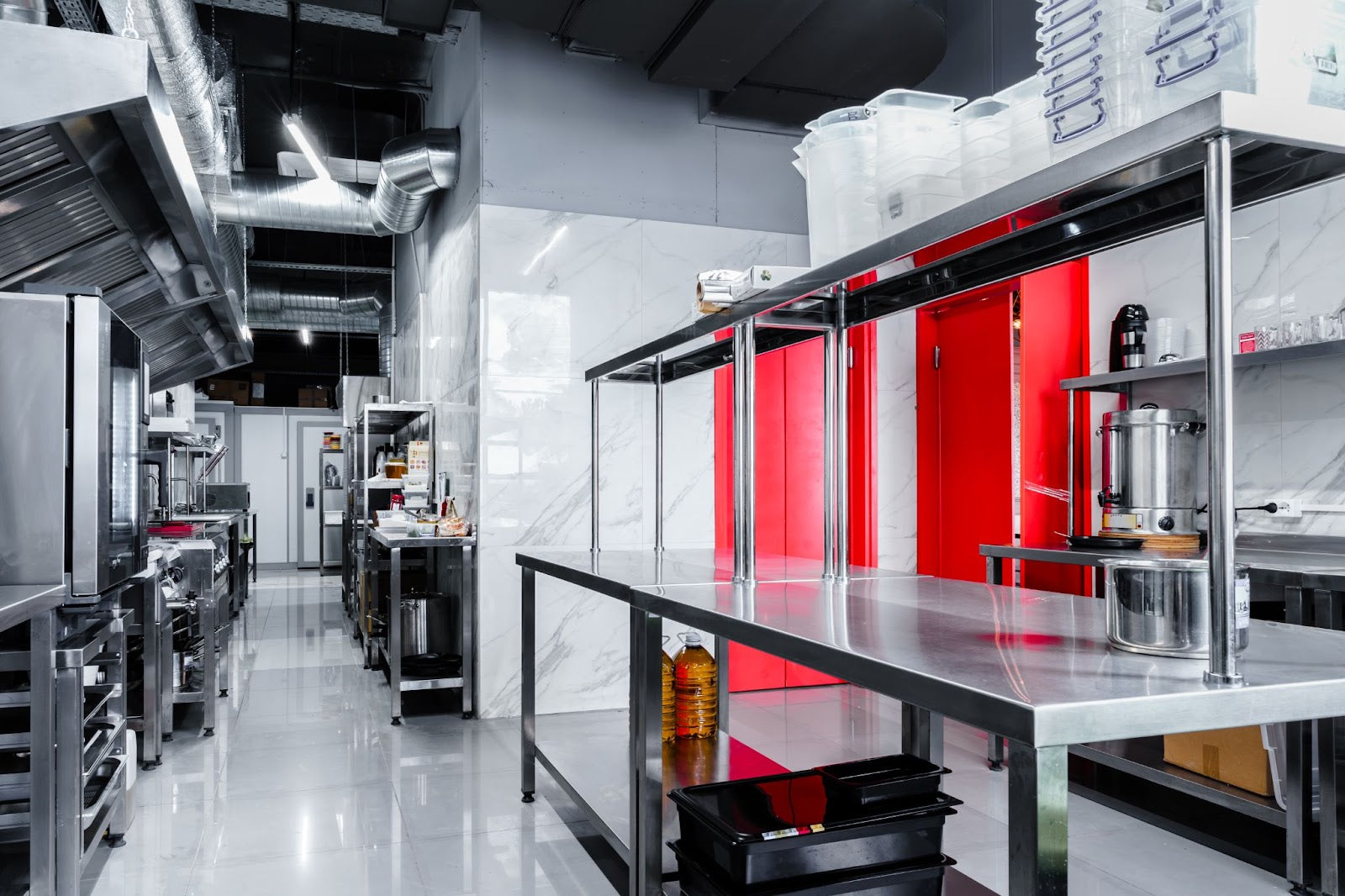
Preparing Your Kitchen for Professional Hood Cleaning
Maintaining a clean and safe kitchen environment is crucial for any commercial kitchen or restaurant, and following best practices for maintaining commercial kitchens can help ensure this. A professional hood cleaning service ensures that your kitchen exhaust system operates at peak efficiency, reducing fire hazards and improving air quality.
Preparing your kitchen for a professional hood cleaning service is an essential step in the process. By taking the time to properly organize and safeguard your kitchen environment, you can facilitate a seamless and efficient cleaning process.
Understanding the steps involved in preparing your kitchen for a professional hood cleaning service helps maintain safety and operational efficiency during the cleaning process. This article will guide you through the necessary preparations to ensure your kitchen is ready for a thorough and effective cleaning.
What is Preparing Your Kitchen for a Professional Hood Cleaning Service?
Preparing your kitchen for a professional hood cleaning service involves a series of steps designed to create an optimal environment for the cleaning crew to work efficiently and effectively. This preparation phase is critical to ensuring that the cleaning process is thorough, minimally disruptive, and compliant with health and safety regulations.
The primary goal of kitchen preparation is to provide unobstructed access to the exhaust system, including hoods, filters, and ductwork. This access allows the cleaning professionals to perform a comprehensive cleaning, addressing all areas where grease and debris accumulate. By removing obstacles and organizing the kitchen space, you enable the cleaning crew to focus on their task without unnecessary interruptions or safety hazards.
Moreover, preparing your kitchen for a professional hood cleaning service demonstrates your commitment to maintaining a clean and safe working environment. It shows that you value the well-being of your staff and customers, as well as the longevity and efficiency of your kitchen equipment. By investing time and effort into the preparation process, you contribute to the overall success of the cleaning service and the smooth operation of your commercial kitchen.
How to Prepare Your Kitchen for Professional Hood Cleaning
A methodical approach to preparing your kitchen for a professional hood cleaning service ensures a streamlined process. First, choose a time when the kitchen experiences minimal activity, such as during a hands-on kitchen exhaust hood cleaning training. This strategy reduces interference with daily operations and allows the cleaning crew to perform their tasks efficiently. Collaborate with your service provider to finalize a schedule that aligns with your kitchen's needs, minimizing any potential disruption.
Effective communication with your team is essential, and accessing detailed information on commercial kitchen maintenance can help guide your preparation efforts. Keep your staff informed about the cleaning timeline and any necessary preparations. Assign specific responsibilities to team members, such as organizing areas around the exhaust system. This helps everyone understand their role in facilitating a successful cleaning process.
Organizing the kitchen space is vital for accessibility. Clear countertops and remove non-essential items to give the cleaning crew unhindered access to key areas. Ensure workspaces are arranged to allow the cleaning team to carry out their tasks without obstacles, promoting a thorough cleaning.
Protecting sensitive equipment is another critical step. Relocate or shield vulnerable appliances and utensils to prevent damage from cleaning agents or debris. Use protective coverings to safeguard these items, allowing the cleaning professionals to focus on their work without concern for potential damage.
Facilitating access to exhaust systems is crucial for a successful cleaning. Remove barriers and create a clear pathway for the cleaning team. If needed, adjust the kitchen layout temporarily to enhance accessibility. This preparation ensures the cleaning crew can reach every part of the exhaust system for a comprehensive clean.
Perform a pre-cleaning inspection of your exhaust systems to identify any maintenance needs. Address any existing issues before the cleaning service to optimize efficiency. Coordinate with the cleaning team to manage repairs and cleaning tasks seamlessly.
End with a comprehensive inspection post-cleaning to ensure the work meets the required standards. This final review confirms that all areas have been addressed, ensuring your kitchen remains in top condition for future operations. For additional details, visit our FAQs about kitchen exhaust hood cleaning certifications.
Step 1: Schedule the Cleaning During Off-Peak Hours
Arranging a professional hood cleaning when your kitchen has downtime is crucial for minimizing operational impact. Opting for a period outside of peak hours ensures that the cleaning crew can conduct their work without hindering the culinary team’s productivity. This tactic not only allows for a focused cleaning effort but also ensures that your staff continues to meet service demands with minimal interruption.
Effectively planning with your cleaning service is essential to ensure a coordinated schedule. Engage with your service provider to determine the most suitable times that accommodate both your operational flow and their availability. This comprehensive planning guarantees that the cleaning process integrates seamlessly into your kitchen’s routine without unforeseen conflicts.
Moreover, conducting the cleaning during these quieter times facilitates a thorough job, as the crew can devote their full attention to the task. This dedicated period ensures that each component of the exhaust system receives meticulous care, leading to an optimal cleaning outcome.
Step 2: Inform Your Staff
Ensure your team is well-prepared by sharing detailed information about the upcoming hood cleaning service. Start by briefing them on the scheduled date and time, emphasizing how this process contributes to maintaining kitchen safety and compliance. A clear understanding of the cleaning schedule enables staff to anticipate changes and adjust their routines accordingly, fostering a cooperative and efficient work environment.
Delegate roles for the preparation phase to streamline operations. Appoint team members to handle tasks such as clearing countertops and organizing areas for optimal cleaning access. Empowering staff with these responsibilities not only enhances the preparation process but also instills a sense of ownership over maintaining a clean and safe workspace.
Additionally, articulate any necessary changes to kitchen procedures during the cleaning. Provide insights on temporary adjustments, like rearranging equipment or temporarily modifying workflows, to ensure a smooth adaptation. This proactive approach maintains operational continuity while accommodating the needs of the cleaning service.
Step 3: Declutter and Organize Kitchen Spaces
Efficiency in cleaning starts with a strategically organized kitchen environment, and using kitchen maintenance tips and checklists can simplify this process. To prepare for a professional hood cleaning, focus on optimizing kitchen spaces by removing clutter and arranging items methodically. Start with clearing all non-essential items from work surfaces. This practice not only allows the cleaning crew to access critical areas without hindrance but also prevents any inadvertent damage to kitchen tools or appliances during the cleaning.
Enhance the efficacy of the cleaning process by structuring work areas. Store utensils and equipment based on their usage frequency and keep frequently used tools accessible yet out of the way. This systematization facilitates both daily kitchen operations and the cleaning process. By ensuring clear pathways and reducing potential obstacles, you promote a comprehensive cleaning experience.
Implement a sustainable approach to maintaining an orderly kitchen. You can explore a photo gallery of MFS Trade School training to see examples of organized and efficient kitchen spaces. Regular assessments of kitchen layouts and storage solutions ensure they support both regular activities and professional cleanings. Encourage team collaboration in these organizational efforts, cultivating a workplace culture that prioritizes cleanliness and efficiency. This proactive measure guarantees that each professional cleaning maximizes its effectiveness, maintaining high standards of kitchen hygiene and operational efficiency.
Step 4: Remove or Cover Sensitive Equipment
Ensuring the protection of your kitchen’s essential items during a professional hood cleaning involves strategic measures. Begin by conducting a thorough assessment of the kitchen space to identify equipment and utensils that may be susceptible to exposure during cleaning. Relocating portable items to a designated safe zone prevents possible damage, while unplugging electrical appliances ensures their safety from moisture and cleaning solutions.
For equipment that remains in place, employing high-quality protective coverings is imperative. Utilize industrial-grade tarps or specialized equipment covers to safeguard surfaces from inadvertent contact with cleaning agents. These covers act as a barrier against moisture and chemicals, preserving the condition of your kitchen assets and ensuring their longevity.
Regularly updating your kitchen’s asset inventory facilitates an organized approach to preparation. By maintaining a detailed record of all sensitive equipment, you can efficiently execute protective measures and ensure comprehensive coverage. This proactive approach not only secures your equipment during cleaning but also supports a seamless and efficient preparation process.
Step 5: Ensure Accessibility to Exhaust Systems
Maximizing access to the kitchen’s exhaust systems is crucial for a comprehensive cleaning. Start by assessing the kitchen's current setup to identify any blockages near the exhaust hoods, ducts, and related components. This evaluation helps determine where adjustments are necessary, allowing the cleaning team to conduct their work efficiently.
Reconfigure kitchen elements by shifting equipment and furniture to open up areas around the exhaust system. This temporary rearrangement might involve relocating bulky appliances or fixtures to create more space. By organizing the kitchen environment in this way, you enhance the crew's ability to clean thoroughly, including reaching areas that are often difficult to access.
Incorporate adaptable design elements into your kitchen to accommodate both routine activities and scheduled cleanings. Consider using portable workstations and adjustable storage units that facilitate easy movement and reorganization. This flexibility not only improves access to exhaust systems but also boosts the kitchen's overall efficiency, supporting continuous maintenance efforts.
Step 6: Check for Necessary Repairs or Maintenance
Before commencing a professional hood cleaning, evaluating the integrity of your kitchen's exhaust systems is imperative, as it highlights the importance of maintaining commercial kitchen equipment. This involves scrutinizing all components—including hoods, ducts, and fans—for any signs of deterioration that could affect the cleaning process. By proactively identifying issues like worn seals or compromised ductwork, you can avert potential disruptions and enhance the efficiency of the cleaning service.
To execute this effectively, develop a comprehensive checklist focusing on typical problem areas. Inspect for subtle indicators such as diminished airflow, persistent odors, or unusual vibrations that may signal deeper mechanical issues. Early detection of these symptoms allows for swift resolution, reducing the risk of extensive repairs and preserving the operational lifespan of your kitchen equipment.
Once potential concerns are identified, liaise with your maintenance team to integrate necessary repairs into the cleaning schedule. By collaborating with professionals, you ensure that both the upkeep and cleaning of your exhaust systems are performed to the highest standards. This synchronized approach not only safeguards against unexpected breakdowns but also reinforces the safety and reliability of your kitchen environment.
Step 7: Plan for Post-Cleaning Inspection
Conduct a detailed post-cleaning inspection to ensure the hood cleaning service has achieved the desired outcomes. This review should be thorough, focusing on critical components such as exhaust hoods, ductwork, and surrounding areas. By examining these elements, you confirm that cleaning standards have been met and that the kitchen operates within safety and hygiene regulations.
Start by evaluating the overall cleanliness of the exhaust system. Check for any residual grease or debris that might have been missed during the cleaning. This step is crucial for maintaining the cleanliness and safety required in commercial kitchens. Additionally, ensure that all mechanical components, such as the exhaust fans and hoods, function correctly post-cleaning.
Engage your staff in the inspection process by gathering their observations on any lingering issues or concerns. This team involvement not only ensures a comprehensive review but also encourages ongoing vigilance in maintaining high standards. By incorporating staff feedback, you promote an environment focused on continuous improvement and operational excellence in kitchen maintenance.
This final review confirms that all areas have been addressed, ensuring your kitchen remains in top condition for future operations. For additional details, visit our FAQs about kitchen exhaust hood cleaning certifications.
Tips on Ensuring a Smooth Cleaning Process
1. Effective Communication
Establishing effective communication with your cleaning service is vital for coordinating a successful hood cleaning. Begin by clearly outlining your kitchen's specific needs and any unique challenges, such as compact spaces or specialized equipment. Regular check-ins with the cleaning crew ensure that any adjustments can be made promptly, allowing the service to proceed smoothly. This proactive approach ensures that all parties are aligned, resulting in a thorough and efficient cleaning process.
2. Continuous Staff Training
Continuous training for your staff plays a crucial role in upholding a clean and safe kitchen. Regular workshops focused on the latest cleaning techniques and safety measures equip your team with the knowledge to maintain high standards consistently. Encouraging staff participation in advanced training programs, similar to those offered by an online kitchen exhaust hood cleaning course, enhances their ability to manage daily cleaning tasks and respond to emergencies effectively. This commitment to training fosters a culture of excellence and preparedness within your kitchen team.
3. Ongoing Maintenance
A strategic maintenance plan is essential for complementing professional cleaning services. Periodically review and service kitchen equipment to identify potential issues before they escalate. Incorporating routine checks and minor repairs into your operations prevents disruptions and extends the life of your kitchen systems. By maintaining a detailed maintenance schedule, you ensure your kitchen operates at peak performance, supporting both safety and efficiency.
4. Consider Starting Your Own Business
Launching a business in the kitchen cleaning sector offers a unique opportunity for those with expertise in the field. Utilize your knowledge of kitchen systems and cleaning techniques to provide specialized services tailored to commercial kitchens. Developing a business plan that addresses common industry challenges and leverages your skills positions you for success in this niche market. Establishing yourself as a trusted service provider not only fulfills a critical need but also allows you to contribute to the safety and functionality of kitchens in the industry.
By implementing these strategies and collaborating with a professional hood cleaning service, you can ensure that your kitchen remains compliant, safe, and efficient. Check out student reviews of MFS Trade School to see how others have benefited from professional training.
